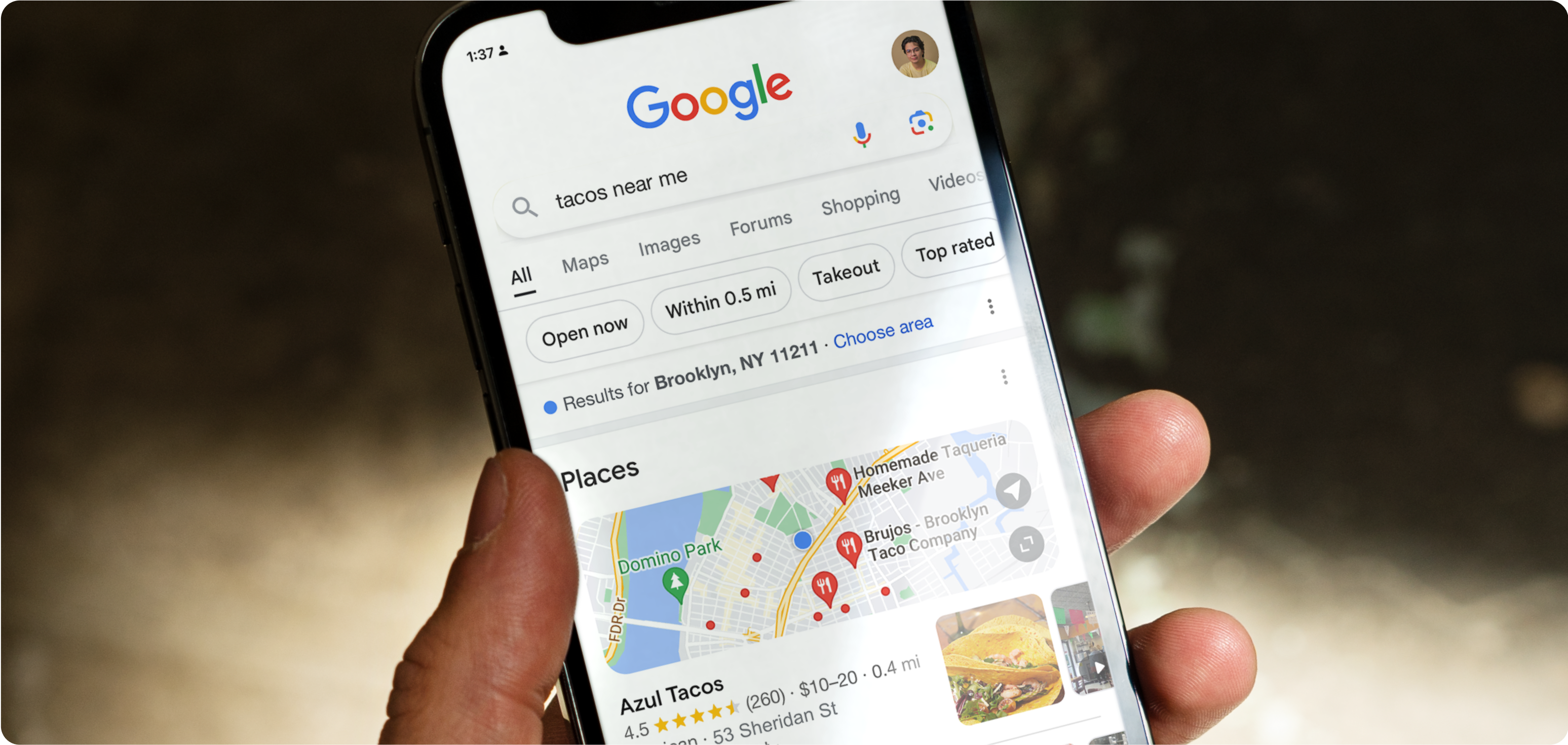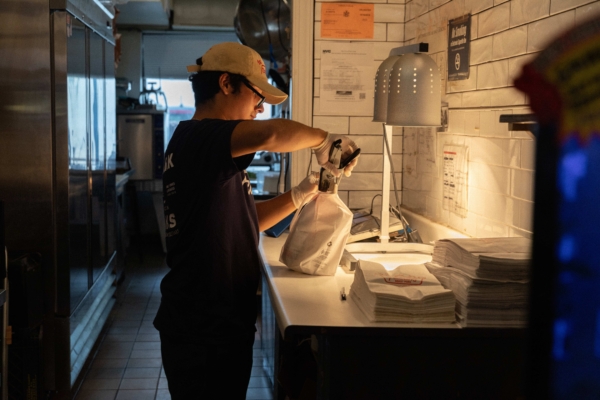7 Steps for Successful Restaurant Market Analysis

Running a market analysis may sound intimidating, but it can be an essential aspect of a successful restaurant. A proper analysis will help you to identify customers, make smart decisions and grow your business. Building a growth plan with concrete data lets you take the guesswork out of running your business and puts you on the path to success.
The good news is, conducting a restaurant market analysis isn’t as complicated as it sounds. In this guide, we’ll walk you through the step-by-step process to research your target audience, competition and future goals.
What is Restaurant Market Analysis?
First, let’s be clear what we mean by restaurant market analysis. An analysis is a detailed assessment of a target market and competitive landscape. It’s the step beyond just doing market restaurant research—it’s about turning that research into a useful decision-making tool. Here are just a few benefits of conducting a market analysis:
- Identify industry trends
- Differentiate your business from competitors
- Reduce costs by focusing on high-value opportunities
- Tailor your products to customer needs
- Reach new markets
- Optimize your marketing efforts
- Monitor your business’s performance
As you can see, a restaurant market analysis is important for a new business, but it’s also valuable to current restaurants hoping to grow. According to Hanover Research, 95% of businesses saw a positive ROI from market research, and 85% say market research helped them enter a new or adjacent market. Building a specific business plan backed by research data is the secret sauce to any thriving restaurant!
Best Practices & Common Mistakes
Before we get into the step-by-step breakdown, here are a few best practices to keep in mind whenever you’re conducting research or an analysis.
- Invest time. This kind of research takes time, so don’t rush things or your analysis might be undercooked.
- Stay objective. It’s important to put aside personal biases. Remember, the goal of a market analysis is to come to data-driven solutions, not gut feelings.
- Use multiple sources. Ensure you get the full picture by drawing information from varied reliable sources.
- Regularly update your analysis. The restaurant landscape is always changing, and updating your analysis can help you stay ahead of both good and bad industry trends.
Finally, here are some of our main tips for what NOT to do:
- Don’t rely on outdated data. Always check the age of your data research. Even trends from just a few years ago might be outdated by now.
- Don’t neglect local market conditions. No two cities are exactly the same! Always tailor your research to your area in all aspects: customers, food suppliers, trends, etc.
- Don’t ignore the competitive landscape. There’s no way to avoid competing with other local restaurants, so always be aware of what similar restaurants are doing. You might discover tips to improve your business, a new niche to fill or even learn what not to do.
How to Conduct a Restaurant Market Analysis
Step 1: Define Your Objectives
This is the simplest but perhaps most important part of market analysis: what do you hope to learn? If you’re not clear about your goals, you’ll probably end up collecting far too little or far too much information and lose track of any meaningful data. Your objective should be specific and tailored to the success of your restaurant. Here are some examples:
- Identify target market. This can include the market’s current size and potential growth.
- Understand the competition. Learn how other restaurants position themselves and how you might be able to stand out.
- Gauge market demand. Research the market’s current needs, preferences and opportunities for your restaurant to meet those needs.
Step 2: Conduct Industry Research
This is the primary data-gathering step of market analysis. By examining industry statistics and standards, you can identify trends, growth rates and other key factors that contribute to successful restaurants in your area. For example, you might want to consider how fast the industry is growing in your area, or what kinds of emerging technologies are impacting restaurants. There are several resources for finding this information, and you’ll want to use multiple to get the full picture:
- National Restaurant Association. Their research covers a wide variety of valuable business operations, workforce engagement and nutrition topics. Becoming a member also gives you the opportunity to connect with other local businesses.
- IBISWorld. A trusted source of industry information for markets around the world.
- Statista. Their data sets make it easy to search for information and discover related information that you might not have considered.
Step 3: Identify Your Target Market
By homing in on a specific target market, you’ll be able to focus your marketing efforts to actual customers and realistic potential customers. You can define your target market by demographics (age, ethnicity, income), psychographics (beliefs, values, lifestyle), geographic factors and behavioral factors. You can gather this information through:
- Surveys and polls
- Focus groups
- Questionnaires and interviews
- Social media insights
For focus groups, you can provide incentives like a free lunch or goodie bag to attract participants. Just make sure everyone is aware that their answers are being recorded for research purposes.
Step 4: Analyze the Competition
Identify your competitors and, more importantly, try to understand what makes them successful and how they position themselves in the market. Here are a few factors to research:
- Price points and value propositions
- Sales tactics and technologies
- Marketing and social media strategies
- Customer reviews and ratings
Remember to consider both direct and indirect competitors. For example, a coffee shop is in direct competition with other coffee shops, but any other business that provides fast beverages can be considered indirect competition, such as a fast-food restaurant, juice bar or boba shop. You’ll also want to keep future competitors in mind—the restaurant industry is always shifting, so always be aware of new brands and trends.
You can conduct a competitive analysis by simply reviewing your competitors’ information on Google to understand their brand, menu, pricing and more. Start with a basic keyword search to find restaurants in your area similar to your own. Once you know your competition, a SWOT analysis is useful to summarize Strengths, Weaknesses, Opportunities and Threats (SWOT) and let you see how your own business compares.
Step 5: Assess Market Demand
Market demand is all about what customers actually want, including what they are spending their money on and what they’re asking for in customer feedback, social media, etc. By developing a picture of current market demand through market surveys, sales data analysis and trend analysis, you can identify gaps in the market that your restaurant can fill. By giving your restaurant just a little extra flavor, you can stand out from the crowd.
Step 6: Evaluate Market Conditions
No restaurant is sheltered from shifting economic tides. There are always other expenses and market conditions to consider, so be sure to examine these elements in your restaurant market analysis. Here are just a few of the factors you should keep in mind:
- Economic trends
- Consumer spending
- Regulatory environment
Get involved and stay involved in the industry to keep up to date on these trends. This means subscribing to industry newsletters, attending trade shows and participating in any local events that connect business owners.
Step 7: Synthesize Your Findings
Remember, the final goal of a restaurant market analysis is putting all of your research into action to improve your business. There are a wide variety of conclusions you might draw, such as:
- Competitors in your area are largely high-end fine dining, but economic factors might mean customers want more affordable options. You might be able to position your business as a more casual but still high-quality restaurant.
- Social media marketing trends are rising, so you might consider increasing your online marketing presence.
- Customers simply aren’t aware of your restaurant, so incentives like free samples, discounts or themed days could draw more attention.
There’s no one right answer here but remember that any business decision you make should be backed up by the data you’ve collected. Create a summary of your findings by detailing what you learned, how it can impact your business and the next steps for improving your business based on the market analysis. That’s a recipe for success!
By adding a summary of your findings to your business plan, you can develop a concrete roadmap to keep yourself on track or to attract potential investors. Check out our step-by-step guide to writing a business plan for more tips.
Plus, check out these additional resources to help you develop your restaurant plan:
- How to Write an Executive Summary for Your Restaurant Business Plan
- How to Craft an Effective Restaurant Operations Plan
- Step-by-Step Guide to Conduct a Restaurant SWOT Analysis
- How to Create a Menu for Your Restaurant: A Comprehensive Guide
Once you have a business plan backed up by market research, you’ll want the best takeout and delivery platform to help achieve your goals. Learn more about how ChowNow’s all-in-one takeout suite can benefit your restaurant.

Restaurant Market Analysis Frequently Asked Questions
What is a target market analysis for restaurants?
A target market analysis for restaurants is the process of identifying your ideal customers based on demographics, behaviors, preferences, and location. It helps you tailor your menu, marketing, and services to attract and retain the right audience for your restaurant.
What are the steps of a restaurant market analysis?
The steps of a restaurant market analysis include defining your objectives, conducting industry research, identifying your target market, analyzing the competition, assessing market demand, evaluating market conditions, and synthesizing your findings into actionable insights.
Why is market analysis important for a restaurant?
Market analysis is important for restaurants because it provides data-driven insights that help improve decision-making, attract more customers, reduce risks, and identify opportunities for growth. It allows you to stay competitive and meet evolving customer needs.
When should a restaurant conduct a market analysis?
Restaurants should conduct a market analysis before opening, launching a new concept, expanding locations, or making major business changes. It’s also smart to update your analysis regularly to stay current with market trends and customer behavior.





